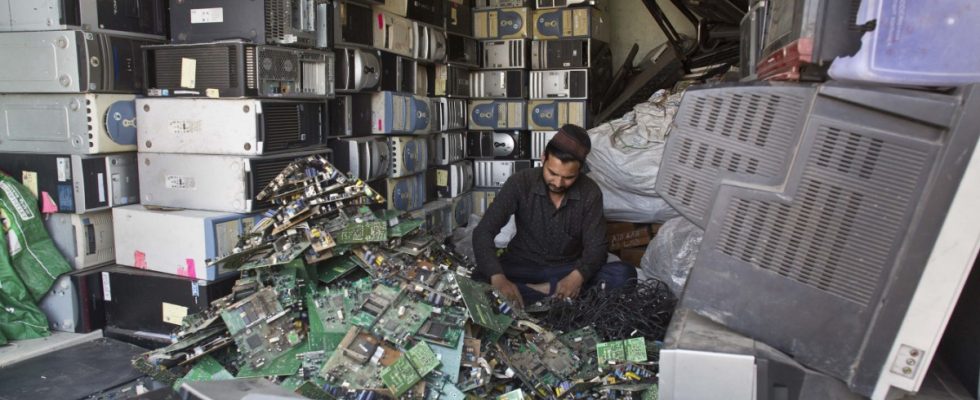Imagine: 40-ton trucks lined up one after the other, the line stretching all the way around the equator. And all vehicles are loaded to the brim with laptops, refrigerators, smartphones and toasters. That gives a pretty good idea of how much electronic waste the world currently generates: 62 million tons. And that in a year.
The number comes from from the current report “E-Waste Monitor”, which the United Nations released on Wednesday. Since 2010, the amount of electronic waste has almost doubled to 34 million tons. If the trend continues, by 2030 it could be a third more than today. The researchers cite increased consumption as the reasons, as well as the short lifespan of products such as smartphones, which are often difficult to repair.
This means that the amount of electronic waste is currently growing almost five times as fast as the amount that is collected and recycled. In 2022, the most recent year of the current evaluation, only 22 percent of electronic waste was properly collected, according to the UN. The rate could fall further by 2030 if governments do not make more efforts than they have so far. Experts warn that electrical devices that are not disposed of properly pose a significant risk to the environment and health. The products often contain toxic substances such as mercury, which can damage the human brain.
At around 18 kilograms per capita, Europe currently generates the most electronic waste per inhabitant, followed by Australia and Oceania (16 kilograms) and North and South America (14 kilograms). At the same time, Europe has the highest recycling rate in the world of around 43 percent. In absolute numbers, Asia leads the statistics, with around half of all electronic waste being thrown away there. At the same time, the Asian countries have made little progress in managing the substances, criticizes the e-waste report.
Gold worth 14 billion euros is contained in the electronic waste generated every year
According to the authors, this is a missed opportunity: according to the calculations, the metals contained in the mountain of electronic waste generated every year are worth 84 billion euros. The copper contained in electrical devices alone accounts for 18 billion euros, and 14 billion euros could be earned from the gold it contains. So far only a small portion of these treasures have been recovered. The report estimates that around 14 million tons of e-waste end up in general waste every year, mostly ending up in landfills.
“The biggest problem worldwide and in all countries is the entry of electronic waste into municipal waste that is landfilled or incinerated,” says Christoph Helbig, Professor of Ecological Resource Technology at the University of Bayreuth. Electrical and electronic devices should never be disposed of in household waste bins. At the same time, municipalities would have to create low-threshold return options. This is also in the interest of raw material supply, says Helbig: “In the future, the recovery of so-called ‘critical raw materials’ such as rare earth metals or specific semiconductors from electronic waste will become increasingly important for industry and the EU.”
However, recycling is not always the best solution, warns Andreas Manhart from the Öko-Institut in Freiburg. “Long-lasting products, repairs and secondary use are significantly more efficient from an environmental and resource perspective.” Therefore, requirements for the minimum durability of devices, targeted support for repair workshops or a right to repair could have a big impact. According to Manhart, in addition to large amounts of electronic waste, this would also save five million tons of carbon dioxide per year in Germany.
With material from the Science Media Center

